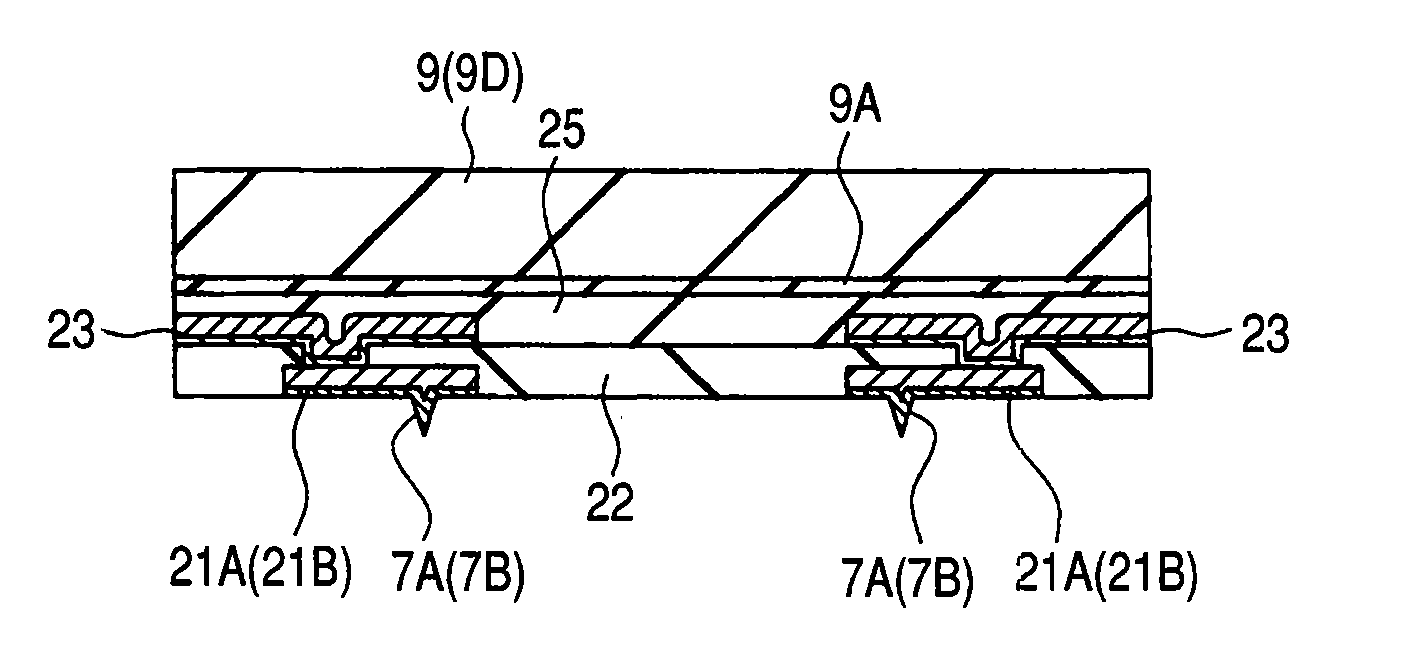Method of manufacturing a semiconductor integrated circuit device
a manufacturing method and integrated circuit technology, applied in the direction of individual semiconductor device testing, semiconductor/solid-state device testing/measurement, instruments, etc., can solve the problems of increasing the number of test pads, reducing the area of test pads, and difficult to align the probes with the arrangement positions of test pads
- Summary
- Abstract
- Description
- Claims
- Application Information
AI Technical Summary
Benefits of technology
Problems solved by technology
Method used
Image
Examples
Embodiment Construction
[0057]The terms as used in the present application have the following means, which are explained below before the invention is described in detail.
[0058]The term “wafer” as used herein includes a single-crystal silicon substrate (in general, having a substantially disk-like shape) used for manufacturing of integrated circuits, a silicon on insulator (SOI) substrate, an epitaxial substrate, a sapphire substrate, a glass substrate, other insulating, semi-insulating or semiconductor substrates, and a composite substrate thereof. Unless otherwise specified, the term “semiconductor integrate circuit device” as used herein may include not only a semiconductor integrated circuit formed on a semiconductor or insulating substrate, such as a silicon wafer or a sapphire substrate, but also a semiconductor integrated circuit, such as a TFT (Thin Film Transistor) or STN (Super-Twisted-Nematic) liquid crystal, formed on another insulating substrate, such as glass.
[0059]The term “device surface” a...
PUM
 Login to View More
Login to View More Abstract
Description
Claims
Application Information
 Login to View More
Login to View More - R&D
- Intellectual Property
- Life Sciences
- Materials
- Tech Scout
- Unparalleled Data Quality
- Higher Quality Content
- 60% Fewer Hallucinations
Browse by: Latest US Patents, China's latest patents, Technical Efficacy Thesaurus, Application Domain, Technology Topic, Popular Technical Reports.
© 2025 PatSnap. All rights reserved.Legal|Privacy policy|Modern Slavery Act Transparency Statement|Sitemap|About US| Contact US: help@patsnap.com



